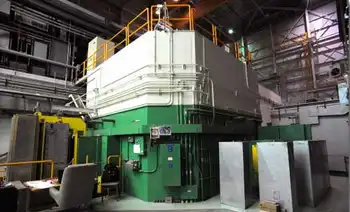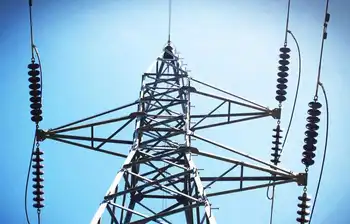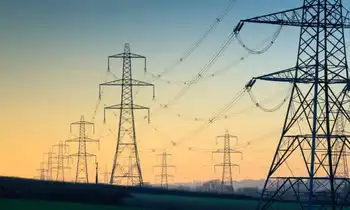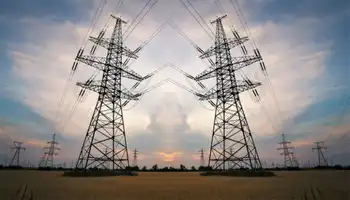Wind farms proving deadly to bats
ALBERTA - Air pressure changes caused by wind farms are killing large numbers of bats, say biologists who are studying the tiny corpses falling out of the sky near turbines in southern Alberta.
They say the bats' lungs over-inflate as air pressure drops near the fast-spinning turbines bursting blood vessels and capillaries.
"Their lungs fill with fluid and they can no longer breathe," says Erin Baerwald, of the University of Calgary, lead author of a report on the bat deaths released by the journal Current Biology.
Baerwald, whose team checks for carcasses under turbines at the Summerview wind farm near Pincher Creek, Alta., every morning, says bats are one of the unforeseen casualties in the rush to harness wind power. Several thousand of the tiny flying mammals are killed by the turbines each year across North America, with some farms much more deadly than others.
Industry officials say they are determined to reduce the death toll but concede it is not going to be easy since so little is known about the nocturnal creatures.
"It's a huge challenge," says Jason Edworthy, director of stakeholder relations for TransAlta Wind, which operates Summerview where close to 700 bats die each year. The Mountaineer Wind Energy Center in West Virginia is even more of a problem, killing as many as 1,800 of the bats a year, most during fall migration.
Bats, which are such good flyers they can pick tiny bugs out of the air at night, are inexplicably attracted to the giant towers and rotor blades that spin at speeds of up to 250 kilometres an hour.
"They're roosting bats so maybe they think they're trees," Baerwald says of the silver-haired bats and hoary bats that are the main casualties at Summerview. They may be also be feeding on insects near the towers. "Or perhaps they're just curious," she says.
Biologists have also been at a loss to explain why the bats are dying. Baerwald, whose team has picked up as many as 188 dead bats a day at Summerview, says half the corpses show no outward sign of injury or contact with the blades. And some of bats they find are still alive, but are unable to fly and have blood in their mouths and noses.
The researchers dissected 75 corpses and report that 90% died from internal hemorrhaging consistent with "barotrauma," tissue damage caused by rapid or excessive change in air pressure near the rotor blades.
Bats have large pliable lungs with more delicate air sacs and blood-gas barriers than birds or other mammals, says Baerwald, who explains that tissues cannot seem to cope with the sudden air pressure drops near the spinning rotors. When outside pressure drops, she says the air sacs can over-expand, bursting the capillaries around them.
There had long been concern that wind farms would kill birds, but they have proved much more deadly to bats. Environmental assessment is required before wind farms are built, but the bat problem was a surprise because little is known about bats.
Baerwald says the problem has grown as towers have become taller at farms located along the migratory paths of bats that breed in north in summer and then migrate as far south as Mexico in the late summer and fall.
Baerwald has found that some of Alberta's tallest wind turbines pose few problems and kill just one bat a year, while poorly sited turbines can kill up to 31 bats a year. The numbers can add up on farms with hundreds of turbines.
Biologists cannot say how big a dent the farms are making the overall population, since it is not known how many of the creatures exist.
But they say their lifestyles make them vulnerable. Hoary and silver-haired bats, which can live up to 30 years, have one or two pups a year, says Baerwald, who describes them as "more like flying grizzly bears than flying mice."
Given the proliferation of wind farms conservationists say it is important to get a better read on both the threat and ways to eliminate it. One study has estimated that as many as 110,000 bats could be killed each year in the eastern U.S. by 2020 if solutions are not found.
Edworthy says TransAlta Wind is determined to reduce the death toll.
The company, which is helping to finance and support Baerwald's group, is running experiments that indicate it might be possible to reduce bat mortality by 50 to 90% by "strategically" operating turbines during migration season. The idea being to only run the rotors during high winds of at least six metres a second, when bats do not fly. It's estimated Summerview would produce less energy – about $50,000 a year less – by cutting operation in a bid to kill fewer bats.
Related News

What's at stake if Davis-Besse and other nuclear plants close early?
LOS ANGELES - A national nuclear lobby wants to remind people what's at stake for Ohio and Pennsylvania if FirstEnergy Solutions follows through with plans to shut down three nuclear plants over the next three years, including its Davis-Besse nuclear plant east of Toledo.
A report issued Monday by Nuclear Matters largely echoes concerns raised by FES, a subsidiary of FirstEnergy Corp., and other supporters of nuclear power about economic and environmental hardships that will likely result from the planned closures.
Along with Davis-Besse, Perry nuclear plant east of Cleveland and the twin-reactor Beaver Valley nuclear complex west of Pittsburgh are slated…




